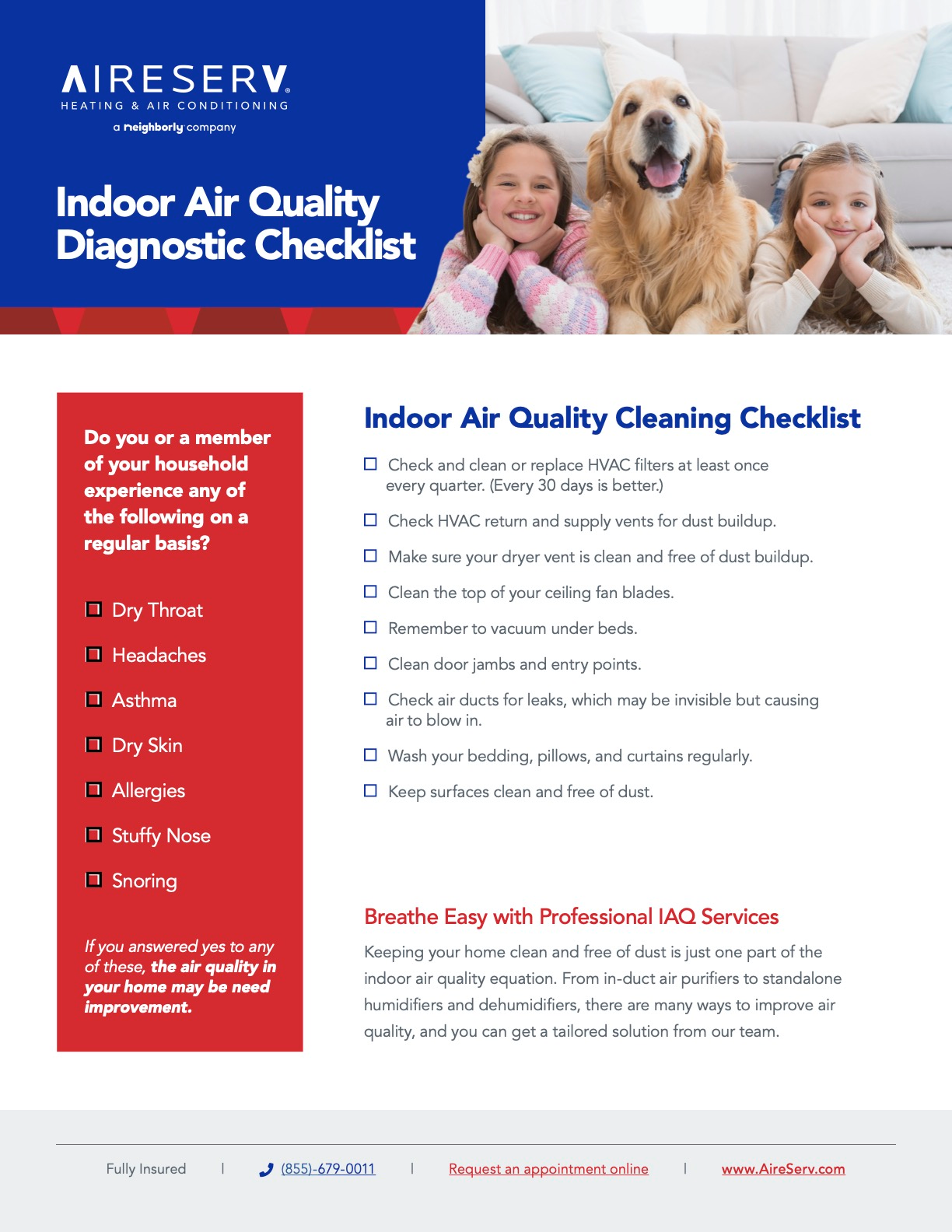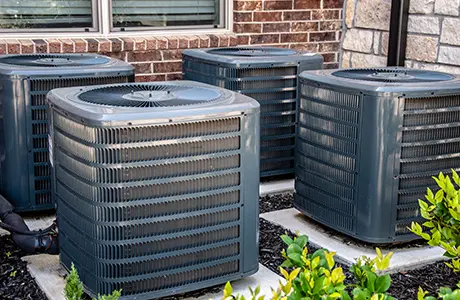The American Lung Association reports indoor air quality can be 2-5 times more polluted than outside air and even up to 100 times more polluted in some instances. What’s more, many Americans spend upwards of 90% of their time indoors, meaning they’re exposed to low-quality air for the vast majority of their days.
Poor indoor air quality can be caused by numerous factors, ranging from construction materials—like chemicals in paint—to combustive pollutants that are a by-product of gas stoves, water heaters, and oil furnaces. Beyond that, moisture and mold in your home, dust mites, pet dander, pests, and other organic materials can lead to worsened air quality. So can chemicals in cleaning supplies and other household items.
Regardless of the source, these pollutants can get trapped in your home, leading to a range of health concerns. These can include:
- Allergies and respiratory problems
- Eye, nose, and throat irritation
- Worsened asthma
- Headaches and fatigue
- Dizziness
- Some cancers and other chronic conditions
Fortunately, there are ways to resolve indoor air quality problems and restore your home or business’s IAQ, like duct cleaning, using dehumidifiers or humidifiers, fresh air ventilation, and air purification systems. If you’re concerned about indoor air quality, Aire Serv is here to help.
Why Choose Aire Serv for Indoor Air Quality Services?
Aire Serv is proud to be a leading provider of HVAC and indoor air quality services for homes and businesses. From air quality testing to the installation of whole-space air quality solutions like dehumidifiers and air purifiers, your local Aire Serv can do it all. Plus, we back our work with the Neighborly Done Right Promise™ to ensure your satisfaction.
Detailed Benefits for Cleaner Indoor Air
The expert service professionals at your local Aire Serv know the importance of high-quality indoor air. We offer comprehensive indoor air quality testing, remediation, and maintenance services. Our process includes:
- Indoor air quality testing: Your Aire Serv service professional will test your indoor air for biological, chemical, and combustive contaminants.
- HVAC system cleaning: After testing, our team will thoroughly clean your HVAC system, including the interior and exterior components. We’ll also test humidity levels and clean your air ducts to reduce the amount of contaminants circulating into your home or business.
- Indoor air quality improvement recommendations: We can install a number of advanced systems to improve your indoor air quality, ranging from high-performance HEPA filters to air purifiers and UV lamps. We may also recommend dehumidifiers, humidifiers or a fresh air ventilation system to help with moisture control and improving ventilation—critical areas that impact indoor air quality.
- Testing: We’ll retest your air after cleaning and installing purification methods to ensure the system is performing perfectly and your indoor air meets the U.S. Environmental Protection Agency’s (EPA) indoor air quality standards.
- Maintenance: Like any critical HVAC component, your indoor air quality system should be regularly maintained for optimal performance. During your maintenance appointment, which we recommend at least annually, we’ll inspect your system, make necessary repairs, and perform a tune-up, as needed.
Tips & Advice for Maintaining Optimal Indoor Air Quality
If you’re looking for ways to maintain indoor air quality between service visits, check out these helpful guides:
Experience the difference of professional indoor air quality services. Request an appointment online or call to get started today.
The Air Serv Indoor Air Quality Checklist
There are many factors that can affect your home or business’s overall indoor air quality. Use this checklist to assess and improve your indoor air quality between service visits.

All Aire Serv franchises are locally owned and operated and may offer fewer or more services than those listed here. To learn more about the indoor air quality services offered in your area, contact the Aire Serv nearest you for details or a customized on-site assessment.
 Click to call
Click to call


 Monitor your HVAC returns and supply vents for dust.
Monitor your HVAC returns and supply vents for dust.

